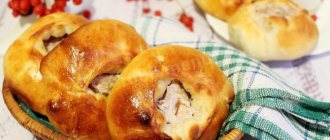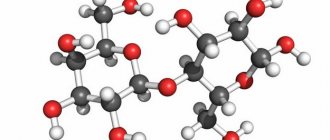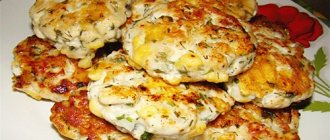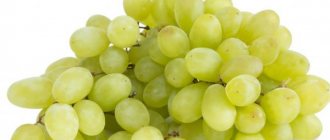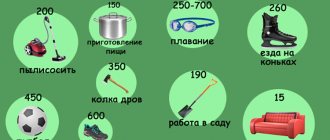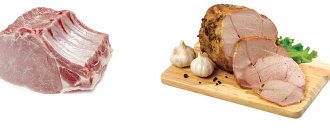Calculation of caloric content of a product per 100 grams
The calculation of the calorie content of 100 grams of product is based on previously known indicators of BZHU (abbreviation: proteins-fats-carbohydrates). The calculation method is the summation of these data (obtained by laboratory analysis and calculations) previously multiplied by a value equal to the energy released (calories) during their splitting. So, for example, 1 gram of protein or carbohydrate can release energy equal to 4.1 kcal, and fat a little more than 9. In calorie calculations, these numbers are usually rounded to whole numbers, as is the result itself.
Our example involves proteins - 0.5 grams, fats - 82.5 grams and carbohydrates - 0.8 grams contained in 100 grams of product. Next we perform the calculation:
Energy value of 100 grams = 0.5 (proteins)*4 + 82.5 (fat)*9 + 0.8 (carbohydrates)*4 = 2 + 742.5 + 3.2 = 747.7 kcal
Our calculated calorie content is more than 250 kcal, which means that butter is 82.5% fat, traditional butter is a high-calorie product with a high fat content and a low level of proteins and carbohydrates.
The benefits of butter for the body
So, what happens if you include butter in your diet? Let's start with the positives.
Improved condition of skin, hair and nails
Butter is a source of vitamins A, B, C, D, E and K, as well as Omega-3 and Omega-6 fatty acids. Moreover, some of the vitamins (A, D and E) are better absorbed together with fats. These substances slow down aging, protect against ultraviolet radiation, stimulate hair growth, strengthen nails and bones, and do many other useful things. With constant use of oil, your hair will become shiny and strong, and your skin will become toned and glowing.
Improves heart and vascular health
Cholesterol is not as bad as it is made out to be. It can be divided into “harmful” - the one that settles on the vessels, and “beneficial”, which removes plaques from them. And even the “bad” cholesterol contained in butter is necessary for the body. Scientists from the University of Bergen found that it increases the level of “good”, which means it helps strengthen the cardiovascular system.
In addition, butter also contains unsaturated fats, which maintain the elasticity and tone of blood vessels.
Photo: istockphoto.com
Digestion will improve
“Bad” cholesterol is beneficial in itself. It is a component of cell membranes, protects nerve fibers, and is involved in digestion. In addition, butter contains glycosphingolipids, which protect the intestines from infections. And finally, vitamin A has a healing effect, relieves inflammation, which means it helps with gastrointestinal problems.
Improved mood, central nervous system and brain function
Vitamin D has a whole range of beneficial properties, including improving mood, memory, concentration, central nervous system and sleep. Omega-6 acid stimulates brain function, and tryptophan contained in milk fat promotes the production of serotonin. Milk fats are also involved in the renewal of brain cells and increase attention, which is why the oil is especially useful for schoolchildren and those engaged in mental work.
Energy will appear
Oil is an excellent source of energy, especially for residents of countries with harsh climates, like Russia. It also helps keep you warm.
Reduces the likelihood of fungal infections
The oil contains lauric acid, which has antifungal and antimicrobial properties. If you use the oil regularly, you will reduce the likelihood of contracting such infections or speed up recovery from existing diseases.
Why Americans love peanut butter so much
Expert opinion: is it possible to lose weight with coconut oil?
Vitamin content
Table 1
| Vitamins | Content | Daily norm |
| A (retinol) | 653 mcg | 65.3 % |
| E (α-, β-, γ-tocopherols) | 1 mg | 10 % |
| D (lamisterol) | 1.5 mcg | 60 % |
| B2 (riboflavin) | 0.1 mg | 5.56 % |
| B3 (PP) (nicotinamide) | 0.2 mg | 1.05 % |
| B4 (choline) | 18.8 mg | 3.76 % |
Butter 82.5% fat, traditional, contains vitamins with high, medium and low content levels, if we consider them according to the approved standards for the significance of the nutritional value of the product.
At the highest level of importance in the food value chain are:
- A, takes part in all functions of the body related to its growth and proper metabolism, preserves the structure of the cornea of the eye.
- D, takes part in the formation of bone and dental tissue.
Vitamins at a medium level of importance include:
- E, keeps the muscular system in good shape.
- B2, maintains body tone.
Vitamins of low content include:
- PP, participates in the formation of hemoglobin.
- B4, is involved in the biosynthesis of heme and proteins, cell proliferation, and tissue respiration.
Kinds
Butter can be divided into several types. There is a sweet cream variety, it is made from fresh cream, it is especially popular in Russia. There is also a sour cream variety, it is made from lactic acid starter cultures. These two varieties undergo pasteurization at a temperature of 89-90 degrees.
There is also Vologda type butter, the temperature at which it is pasteurized is approximately 97-98 degrees. Various fillers can also be added to these dairy products. This could be honey, vanillin, cocoa, sugar or a variety of berry and fruit juices. The calorie content per 100 grams of each type is approximately the same.
The criteria by which you can say that you have good quality butter are taste and aroma. There should be no unnecessary tastes or odors. You can also evaluate the external consistency and color. It is best if the color is white or pale yellow. It should also be uniform. If you are looking at a salted product, please note that it should contain no more than 2% salt. It should also be salted evenly.
Content of chemical elements
table 2
| Elements | Content | Daily norm |
| Iron (Fe) | 0.2 mg | 1.43 % |
| Potassium (K) | 15 mg | 0.43 % |
| Calcium (Ca) | 12 mg | 1.2 % |
| Manganese (Mn) | 0 mg | 0.1 % |
| Copper (Cu) | 2.5 mcg | 0.25 % |
| Sodium (Na) | 7 mg | 0.29 % |
| Selenium (Se) | 1 mcg | 1.82 % |
| Phosphorus (P) | 19 mg | 1.9 % |
| Fluorine (F) | 2.8 mcg | 0.07 % |
| Zinc (Zn) | 0.1 mg | 1.25 % |
Low level elements of this product include:
- Fe (iron) is involved in blood formation.
- K (potassium), helps the heart muscle work and removes unnecessary fluid from the body.
- Ca (calcium) is necessary for bone and dental tissues.
- Mn (manganese) is necessary for proper cell development and iron absorption.
- Cu (copper) is involved in the process of hematopoiesis, growth and development of cells and tissues, and the construction of proteins.
- Na (sodium) actively participates in the formation of gastric juice for the digestion process and, together with potassium, maintains the salt composition of the blood unchanged.
- Se (selenium), protects cells from free radicals and damage, slows down the aging process.
- P (phosphorus), required by the skeletal system and teeth.
- F (fluorine), like phosphorus and calcium, is required by the skeletal system and teeth.
- Zn (zinc), takes part in blood formation and tissue respiration.
Calorie content Butter. Chemical composition and nutritional value.
Nutritional value and chemical composition of “Butter”.
The table shows the nutritional content (calories, proteins, fats, carbohydrates, vitamins and minerals) per edible portion.
| Nutrient | Quantity | Norm** | % of the norm in 100 g | % of the norm in 100 kcal | 100% normal |
| Calorie content | 748 kcal | 1684 kcal | 44.4% | 5.9% | 225 g |
| Squirrels | 0.5 g | 76 g | 0.7% | 0.1% | 15200 g |
| Fats | 82.5 g | 56 g | 147.3% | 19.7% | 68 g |
| Carbohydrates | 0.8 g | 219 g | 0.4% | 0.1% | 27375 g |
| Water | 16 g | 2273 g | 0.7% | 0.1% | 14206 g |
| Ash | 0.2 g | ~ | |||
| Vitamins | |||||
| Vitamin A, RE | 653 mcg | 900 mcg | 72.6% | 9.7% | 138 g |
| Retinol | 0.59 mg | ~ | |||
| beta carotene | 0.38 mg | 5 mg | 7.6% | 1% | 1316 g |
| Vitamin B2, riboflavin | 0.1 mg | 1.8 mg | 5.6% | 0.7% | 1800 g |
| Vitamin B4, choline | 18.8 mg | 500 mg | 3.8% | 0.5% | 2660 g |
| Vitamin B5, pantothenic | 0.05 mg | 5 mg | 1% | 0.1% | 10000 g |
| Vitamin D, calciferol | 1.5 mcg | 10 mcg | 15% | 2% | 667 g |
| Vitamin E, alpha tocopherol, TE | 1 mg | 15 mg | 6.7% | 0.9% | 1500 g |
| Vitamin K, phylloquinone | 7 mcg | 120 mcg | 5.8% | 0.8% | 1714 g |
| Vitamin RR, NE | 0.2 mg | 20 mg | 1% | 0.1% | 10000 g |
| Macronutrients | |||||
| Potassium, K | 15 mg | 2500 mg | 0.6% | 0.1% | 16667 g |
| Calcium, Ca | 12 mg | 1000 mg | 1.2% | 0.2% | 8333 g |
| Sodium, Na | 7 mg | 1300 mg | 0.5% | 0.1% | 18571 g |
| Sera, S | 5 mg | 1000 mg | 0.5% | 0.1% | 20000 g |
| Phosphorus, P | 19 mg | 800 mg | 2.4% | 0.3% | 4211 g |
| Microelements | |||||
| Iron, Fe | 0.2 mg | 18 mg | 1.1% | 0.1% | 9000 g |
| Manganese, Mn | 0.002 mg | 2 mg | 0.1% | 100000 g | |
| Copper, Cu | 2.5 mcg | 1000 mcg | 0.3% | 40000 g | |
| Selenium, Se | 1 mcg | 55 mcg | 1.8% | 0.2% | 5500 g |
| Fluorine, F | 2.8 mcg | 4000 mcg | 0.1% | 142857 g | |
| Zinc, Zn | 0.1 mg | 12 mg | 0.8% | 0.1% | 12000 g |
| Digestible carbohydrates | |||||
| Mono- and disaccharides (sugars) | 0.8 g | max 100 g | |||
| Essential amino acids | |||||
| Arginine* | 0.02 g | ~ | |||
| Valin | 0.03 g | ~ | |||
| Histidine* | 0.02 g | ~ | |||
| Isoleucine | 0.03 g | ~ | |||
| Leucine | 0.05 g | ~ | |||
| Lysine | 0.03 g | ~ | |||
| Methionine | 0.01 g | ~ | |||
| Methionine + Cysteine | 0.02 g | ~ | |||
| Threonine | 0.03 g | ~ | |||
| Tryptophan | 0.03 g | ~ | |||
| Phenylalanine | 0.03 g | ~ | |||
| Phenylalanine+Tyrosine | 0.05 g | ~ | |||
| Nonessential amino acids | |||||
| Alanin | 0.02 g | ~ | |||
| Aspartic acid | 0.04 g | ~ | |||
| Glycine | 0.02 g | ~ | |||
| Glutamic acid | 0.09 g | ~ | |||
| Proline | 0.03 g | ~ | |||
| Serin | 0.03 g | ~ | |||
| Tyrosine | 0.03 g | ~ | |||
| Cysteine | 0.01 g | ~ | |||
| Sterols (sterols) | |||||
| Cholesterol | 190 mg | max 300 mg | |||
| Saturated fatty acids | |||||
| Saturated fatty acids | 53.6 g | max 18.7 g | |||
| 4:0 Oil | 3.74 g | ~ | |||
| 6:0 Kapronovaya | 0.83 g | ~ | |||
| 8:0 Caprylic | 0.72 g | ~ | |||
| 10:0 Kaprinovaya | 1.89 g | ~ | |||
| 12:0 Lauric | 2.42 g | ~ | |||
| 14:0 Miristinovaya | 7.83 g | ~ | |||
| 16:0 Palmitinaya | 24.61 g | ~ | |||
| 18:0 Stearic | 7.52 g | ~ | |||
| Monounsaturated fatty acids | 26.79 g | min 16.8 g | 159.5% | 21.3% | |
| 14:1 Myristoleic | 0.84 g | ~ | |||
| 16:1 Palmitoleic | 2.86 g | ~ | |||
| 18:1 Oleic (omega-9) | 22.73 g | ~ | |||
| Polyunsaturated fatty acids | 2.5 g | from 11.2 to 20.6 g | 22.3% | 3% | |
| 18:2 Linolevaya | 0.84 g | ~ | |||
| 18:3 Linolenic | 0.07 g | ~ | |||
| Omega-3 fatty acids | 0.07 g | from 0.9 to 3.7 g | 7.8% | 1% | |
| Omega-6 fatty acids | 0.84 g | from 4.7 to 16.8 g | 17.9% | 2.4% |
The energy value of butter is 748 kcal.
Primary Source: Created in the application by the user. Read more.
** This table shows the average levels of vitamins and minerals for an adult. If you want to know the norms taking into account your gender, age and other factors, then use the “My Healthy Diet” application.
Features of use at different ages
The substances contained in butter help the development of the hormonal system, so it is very important to introduce it into the diet of children and adolescents whose hormonal base is just beginning to develop.
Until about 40 years of age, it must be present in a person’s diet every day, and after 40 years of age, it must be consumed in small and strictly individual doses, depending on your health condition.
It is important to remember that after 40 years the body no longer needs to actively support the hormonal and reproductive systems, and the cholesterol contained in butter can lead to atherosclerosis.
This means that after 40 years you need to reduce your consumption of various animal fats (not only butter, but also other types). However, this is not a reason to abandon it altogether.
Best materials of the month
- Coronaviruses: SARS-CoV-2 (COVID-19)
- Antibiotics for the prevention and treatment of COVID-19: how effective are they?
- The most common "office" diseases
- Does vodka kill coronavirus?
- How to stay alive on our roads?
How is it used in cooking?
In cooking, butter is used in a variety of recipes:
- The easiest way to use this butter is to make a sandwich with it. The sandwich will be good just with a layer of butter. Or you can put some other tasty ingredient on top. For example, cheese, sausage, caviar, or any food you like.
- It is good to season porridges, side dishes, meat and fish dishes with this oil.
- Try mixing butter with a little flour to create an ingredient for a variety of sauces.
- This product can also improve the taste of broth or soup.
- This oil is actively used to prepare various types of dough.
Table of nutritional value and calorie content of foods
By carefully examining all the tables below, you have the opportunity to quickly plan your diet, filling it with healthy foods with a previously known calorie content and composition. The benefit from such an action will be clear: the body will receive everything it needs, but not in excess, but exactly as much as it can use in a day. Dividing into groups is convenient, because you can immediately clearly see what is best combined with what.
- Dairy and fermented milk products
Food elements of this group are the basis of nutrition for people who prefer a healthy lifestyle. Milk is rich in calcium, vitamins and minerals, and is also easily absorbed by the body. A large amount of proteins in cheese, kefir, fermented baked milk or cottage cheese is the main value of these products. A diet based on dairy products helps stabilize the gastrointestinal tract thanks to the natural bacteria in the composition.
Sources:
https://vitamingid.ru/articles/maslo-slivochnoe-kaloriynost-vitaminy/ https://horsaopt.ru/catalog/maslo-slivochnayastrana200.html https://sovets.net/5062-pishchevaya-tsennost-produktov.html
What is the nutritional value of food
This is a complex property of food, containing a certain amount of energy that is formed during the oxidation of carbohydrates, fats and proteins. It is necessary to perform basic physiological and chemical functions of the body. Any element of food consumed by a person, be it of animal or plant origin, has its own calorie content, which is measured in kilocalories or kilojoules. The complex, which consists of the nutritional value of food, consists of the following elements:
- energy value;
- biological effectiveness;
- glycemic index;
- physiological value.
Energy value
EC is the amount of energy released in the human body when consuming a particular food. The energy value (calorie content) should approximately coincide with its costs. Changes to a greater or lesser extent will certainly lead to unpleasant consequences. For example, regular accumulation of food energy that exceeds the body’s daily needs is the path to obesity, so it is important to calculate the proportion of consumed fats, proteins and carbohydrates depending on personal activity. This can be done online on most diet websites.
Biological effectiveness
This definition means an indicator of the quality of fatty components in food, the content of polyunsaturated acids, vitamins, and other essential minerals. There are many of these substances in nature, but only 22 of them are needed to build the body. Eight amino acids are essential (they are not synthesized independently):
Glycemic index
In addition to calorie content, any product consumed by a person has a glycemic index (GI). This is a conditional definition of the rate of breakdown of carbohydrate-containing food. The GI of glucose is considered to be 100 units. The faster the breakdown process of any product occurs, the higher its glycemic index. Dietitians divide food into groups with high (empty carbohydrates) and low (slow) GI.
Physiological value
This element of nutritional value is determined by the ability of products to affect important systems of the human body:
- Pectin and fiber (ballast substances) have a beneficial effect on food digestion and intestinal permeability.
- Alkaloids in coffee and tea stimulate the cardiovascular and nervous systems.
- The vitamins contained in foods adjust the immune system of the human body.
Nutritional value of food - table
A person’s need for energy, which is contained in products, is an important factor in the existence of the entire organism as a whole. Human life is impossible without energy consumption, and in order to replenish strength, a particular individual needs a different set of basic nutrients. Knowledge about the nutritional value of foods will be useful not only for athletes, but also for those who want to lead a healthy lifestyle. The main sources of energy found in any food are proteins, carbohydrates and fats. The right combination of these nutrients will help keep your body functioning at a high level.


